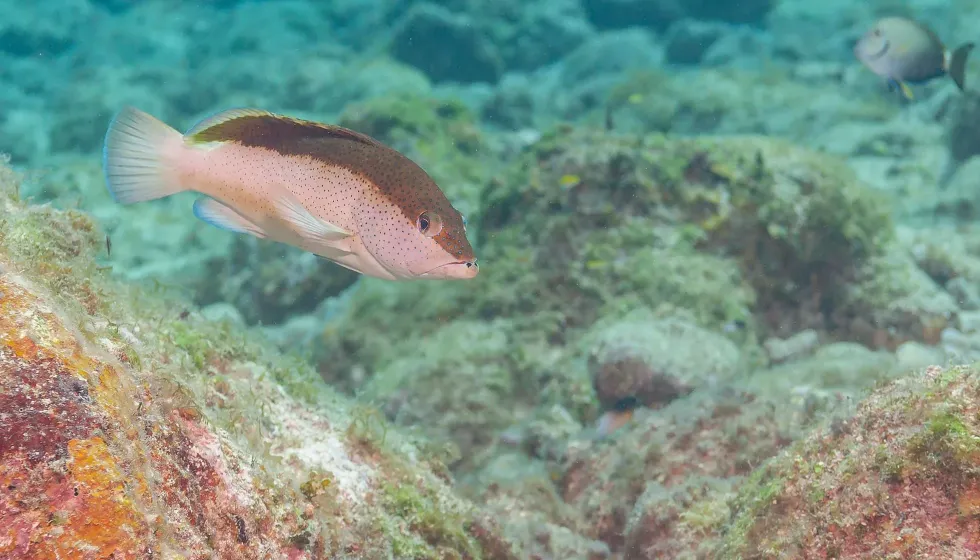The Atlantic butterfish is recognized for its exceptionally dainty, profound body. It acquired its rich name from its high oil content.
The butterfish is a little fish with the most significant tipping the scales at a little more than 1 lb (480g) and 1 ft (30cm) long. It ranges along the North American coast as far south as Florida and as far north as Newfoundland fishing seas.
Atlantic butterfish have a heavy, somewhat blue back and pale sides with various unpredictable dim spots that blur in the afterlife. The stomach is shiny. They have pointed pectoral balances, a short head, harsh noise, a small mouth, and a profoundly forked tail. It is a brilliant container fish wealthy in flavor.
Specialists perceive 15 unique species in this gathering, which they sort into three distinctive ordered families and loose schools. Individuals allude to different species in this family as harvest fish and pomfret.
The butterfish is well known for taking asylum when youthful among the limbs of jellyfishes. The dollarfish and a few different types of butterfishes are usually utilized as food fisheries.
You may also check out Arowana facts and mudfish facts from Kidadl.
Butterfish Interesting Facts
What type of animal is a butterfish?
Atlantic butterfish is a type of fish species belonging to the family Stromateidae. It is pretty popular in New Zealand, Rhode Island, the Atlantic coastline, Cape Hatteras, and New England, and it is also known for its use in a variety of squid dishes food.
What class of animal does a butterfish belong to?
Atlantic butterfish is a type of fish belonging to the Animalia kingdom, class Ray-finned fishes.
How many butterfish are there in the world?
Atlantic butterfish are classified as of Least Concern by the IUCN, meaning that these fish are still being bred in many parts of the world. Butterfish are found in abundance in and around New Zealand, Rhode Island, the Atlantic coastline, Cape Hatteras, and New England.
Where does a butterfish live?
Atlantic butterfish are boundless to New Zealand and occur from North Cape to the Snares Islands and southern waters of the Gulf of Maine. The species is likewise revealed from the Chatham, Bounty, and Antipodes Islands. They possess rough coastlines and are usually found among ocean growth beds in reasonably rough water fisheries.
Their fundamental profundity range is 0-65.6 ft (0–20 m). They happen shallower in the north than in Cook Strait. In southern waters, they can be found as profound as 131.2 ft (40 m).
What is a butterfish's habitat?
The various species in this gathering have diverse environmental inclinations. Most carry on with pelagic ways of life and swim openly in the water.
Some live in waterfront areas, some lean toward natural reef surroundings, and some even live in shielded estuaries as food in the gulf. Each has its extraordinary inclinations. Atlantic butterfishes and their family members live in the sea well seaward, near the shore, or huge narrows.
Grown-ups live in more deep waters, either on the base or in untamed water in center profundities. The youthful typically live close to the surface, now and again among jellyfishes.
Who do butterfish live with?
Butterfish are known to be less social, dorsal fin and do not like to meet other fishes while fishing at gulf. They want to stay with other butterfish and form their school. Adult fish can be healthy and feed themselves, whereas the young cannot survive on their own due to fishing.
How long does a butterfish live?
Atlantic butterfish have an average lifespan of around 11 years; however, it is assessed they may live up to 15 years. They are effortlessly kept in aquariums and adjust well to pet life.
How do they reproduce?
There is little known about the conduct of butterfishes and their family members. We do know that a portion of these fish live among jellyfish. Numerous species structure schools and live together.
Some assemble under skimming destruction and floats and around boats. Atlantic butterfishes and their family members discharge enormous quantities of eggs into untamed water. These fishes likely produce once per year.
Every species has its remarkable conceptive practices and rates for fishing pectoral fins. In general, they breed by means of generating.
In the generating cycle, the females discharge their eggs, and the guys prepare them outside of the body. Most butterfish, Peprilus triacanthus, occasionally generate, frequently because of water temperature. Various species and sizes of fish produce multiple quantities of eggs.
What is their conservation status?
Butterfish are currently not registered on any conservation registry, and it is classified as Least Concern as their population is very high. This indicates that the population of this fish species is stable.
Butterfish Fun Facts
What do butterfish look like?

The entirety of the different species of butterfish has, to some degree, a comparable appearance. They have profound, adjusted bodies with double dorsal fins and balances pointing to lower pectoral fins. Moreover, most species additionally have brilliant tinges. Most measure about a foot long at the biggest.
How cute are they?
Butterfish have that cuteness that comes with peaceful fish. They are docile and slow-moving. They are one of the peaceful species that could be found in the ocean.
How do they communicate?
It is notable that butterfish communicate by motion and movement, as in the profoundly controlled synchronized swimming of schools of fish.
How big is a butterfish?
Butterfish usually grow up to 7.9-10.6 in (20-27 cm), but many of them can grow even longer, sometimes up to 13.8 in (35 cm). On average, they weigh around 0.3-1 lb (125-450 g).
How fast can a butterfish swim?
Not much information is available on the average swimming speed of the Atlantic butterfish, but these fish are not known to travel around a lot.
How much does a butterfish weigh?
Butterfish usually weigh around 1 lb (453.6 g). Some fish has also grown large enough to weigh 1.1 lb (500 g).
What are the male and female names of the species?
The males and females of the butterfish species don't have separate names.
What would you call a baby butterfish?
There is no specific name for a baby butterfish.
What do they eat?
These fish go after different creatures. Their diet changes depending on the species, where they live, and their size. Bigger fish go after more modest fish species, while more modest fish essentially chase spineless creatures like shrimp and tiny fish. Every species has its interesting inclinations. Atlantic butterfish eat ocean spurts, mollusks, and little shellfish.
Are they eaten by humans?
Yes, humans eat Atlantic butterfish all over the world, as the butterfish taste is amazing. It is quite famous for being a tasty fish, especially with different butterfish recipes. Aside from their incredible taste, butterfish is a decent wellspring of supplements, nutrients, and minerals. There are a lot of butterfish health benefits.
Would they make a good pet?
Yes, American butterfish are known to be good pets because they are small fish in size, making them the best for a home aquarium.
Did you know...
They're not called butterfish because resemble a stick of butter. All things considered, the meat of the fish has a delicate surface, like eating margarine. Individuals in the Indo-Pacific locale every now and again eat a few animal varieties in this gathering.
What happens to a butterfish's spots after dying?
Once the Atlantic butterfish dies, there's a are chance that the numerous irregular dark spots can fade away. There are some occasions that these spots can remain even after their death.
How many species of butterfish are there?
The butterfish species contains 15 species of dollarfish in three genera. We will look at all the 15 species of butterfish. Mulloway is traditionally known as Australian butterfish.
· Greenbone butterfish
· Japanese butterfish
· Dollarfish
· Chinese silver pomfret, Pampus chinensis
· Caribbean butterfish
· Atlantic butterfish (aka American butterfish)
· Gulf butterfish, Peprilus burti
· Butterfish mercury
· Star butterfish
· Guyana butterfish
· Atlantic butterfish
· Shining butterfish, Peprilus ovatus
· Butterfish peprilus triacanthus
· Starry butterfish, Stromateus stellatus
· Blue butterfish, Stromateus fiatola
· Southwest Atlantic butterfish, Stromateus brasiliensis
Here at Kidadl, we have carefully created lots of interesting family-friendly animal facts for everyone to discover! Learn more about some other fishes from our red drum facts and teira batfish facts pages.
You can even occupy yourself at home by coloring in one of our free printable butterfish coloring pages.









